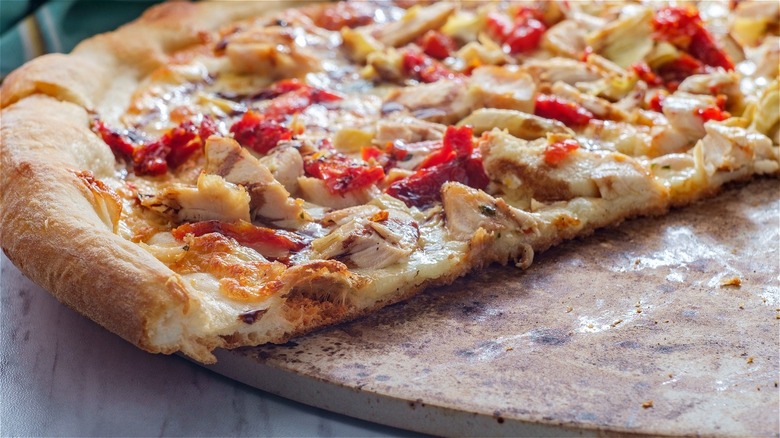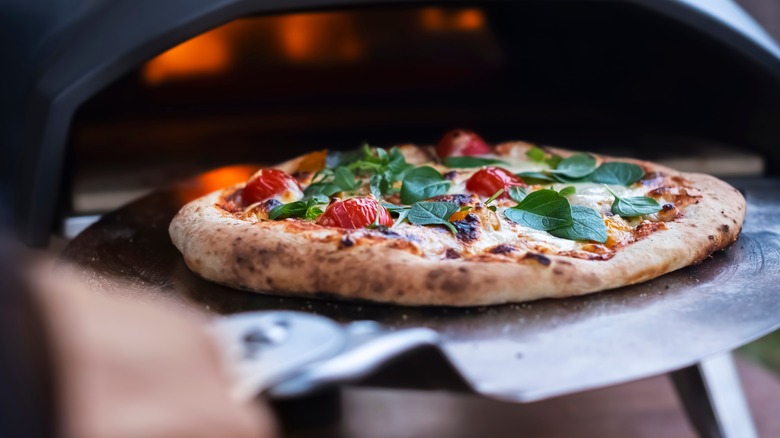Why It's A Mistake Not To Use A Pizza Stone When Cooking At Home
If you're wondering why your homemade pizza can never measure up to the one you had on that trip to Italy that one time, there might be a few reasons why the pizza tastes better at a restaurant. Using poor-quality ingredients will lead to a disappointing pizza. If you're going to put all the effort into making pizza at home, use great ingredients — homemade pizza isn't a quick weeknight meal, so don't treat it like one. Be indulgent and seek out high-quality ingredients like 00 flour, a can of San Marzano tomatoes, and mozzarella di bufala to elevate your homemade pizza to new levels.
Besides your ingredients, you might not be letting your dough prove long enough to get a really great, flavorful crust. It's recommended to let the dough ferment and proof for up to 72 hours before using it, according to Alive & Kickin' Crust. That's why the crusts are so tangy and flavorful. Mix up your dough a day or two before you plan on using it to build as much flavor as possible. And don't be afraid of a wet dough — a high-hydration pizza dough will ensure a crisp yet light and airy crust — so aim for around 60% water, according to Crust Kingdom.
And, sadly, our conventional home ovens, even with convection, don't get nearly as hot as the wood-fired stone ovens in pizzerias, where temperatures can easily reach 800 degrees Fahrenheit. You can remedy this by investing in a pizza stone.
Using a pizza stone mimics the conditions of a pizza oven
Brick gas- or wood-fired pizza ovens work with a few different kinds of heat, including radiation and convection, which our ovens at home aren't made for. A pizza oven's domed shape allows for and maintains super high temperatures, and the surface on which pizza is cooked absorbs and radiates heat, according to Alfa Forni. It makes for pizza with an airy crust and nary a soggy bottom in sight. Using a pizza stone will get you as close as possible to restaurant-quality pizza. The stone will cook your pizza from the bottom up and radiate the heat the same way a pizza oven would. The best pizza stones to buy are made from material that absorbs and distributes heat evenly, like cast iron or ceramic.
To ensure great results, your pizza stone needs to be as hot as possible. Place your stone in a cold oven and set it as high as it will go, and let it preheat for at least an hour. This gives the stone ample time to absorb heat. Tony Gemignani, the author of "The Pizza Bible," recommends using two steels or stones in your oven to take advantage of heating zones and start your pizza on the top stone and move it to the bottom one. If you're still not satisfied with the results and have the budget and outdoor space to accommodate one, look into a pizza oven like an Ooni.

